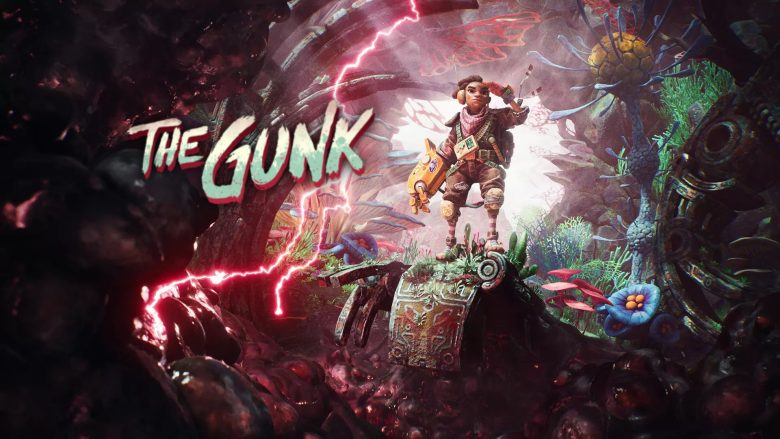A work that breathes through the organic symbiosis of art and architecture — not merely two crafts, but a living voice and lifeblood, a sacred conduit through which all forms, born of life or death, arise, intertwine, and endure in perpetual harmony.

You know, it was one of those classic, gray, somewhat dull rainy afternoons when our eyes—almost as if caught in an irresistible spell—fell upon Little Mage. I still remember almost every detail of that day perfectly. It was a Tuesday, one of those typical May Tuesdays, the air cool and fresh, the breeze gently stirring the leaves on the trees, pausing now and then to give way to the soft, steady patter of rain on the ground. A feeling you’ve probably all experienced at least once a year: that calm, that peaceful stillness that seems to suspend time itself.
Then, out of nowhere—a click—and our eyes—my eyes—rested on a message from a solo developer, yet another brave, talented individual taking on the daunting challenge of creating a project completely alone, without external help, without any support except their own inner voice. And in that very moment, as if caught in a mesmerizing trance, our eyes became fixed—magnetized—by his very first creation: Little Mage.
Weeks have passed since then; in that time, we waited, we reflected, and we carefully considered the best way to bring this story to you. We quickly realized that a simple, brief feature could never do it justice. We had to go deeper—to unearth the very heart and soul of this world and to honor not just the work, but also the creator, in the fullest and most meaningful way. Not with a fleeting glance, but with something that truly steps beyond the curtain—right into the beating heart. And here we are.
So, without further ado, if you’re ready to discover more closely the world of Little Mage and its talented creator, stay with us—an enchanting, dark, and magical world full of challenges and endless wonder awaits.
Violoken: The Lone Architect Behind the Arcane World of Little Mage
Violoken is far more than an indie game developer — they are a passionate artist, a fearless visionary, a thoughtful gamer, and above all, a creator resolutely committed to leaving a distinct and lasting mark on the gaming landscape, without ever compromising their unique artistic vision. Their introduction to us came not with grand declarations, but through a simple yet profoundly clear manifesto that outlined with precision the intent and ambitions behind their first major project, Little Mage. This manifesto revealed a creator as daring in imagination as they are disciplined in craft—a rare fusion of bold creativity and meticulous execution that lies at the heart of their work.
With a rich professional background in architecture and art direction, Violoken draws inspiration from the structural and aesthetic principles of spatial design—embracing elements such as form, light, shadow, and texture. These influences are not mere decoration; they are the very foundation that breathes life into Little Mage, shaping every environment, character, and narrative element. This architectural sensibility brings a rare depth and coherence to the game’s world-building, infusing the gameplay with a sense of tangible presence and artistic integrity.
Beyond game development, Violoken’s multidisciplinary expertise spans a wide spectrum: from acclaimed visual arts projects and academic research to public speaking engagements and published works. Their journey through these diverse creative fields reflects an insatiable curiosity and a refusal to be confined by traditional boundaries. Each venture has sharpened their skills, broadened their perspective, and enriched the creative palette from which Little Mage emerges.
At the heart of Violoken’s philosophy lies a profound respect for play itself — not just as a mechanic, but as a form of meaningful human experience. Their ambition is to craft more than just a game; they seek to create an immersive world where players can lose themselves, feel truly seen, and find inspiration. Little Mage is a labor of love and dedication, shaped by hands that understand both the art of creation and the deep connection between a game and its audience.
What Is Little Mage?
While the details shared by the developer remain limited and do not yet paint a fully clear picture of what to expect from Little Mage, they nonetheless offer tantalizing glimpses into the captivating vision behind the project and the heartfelt way it embraces its artistic core.
Little Mage is the heartfelt passion project of an architect and art director turned solo game developer, soon to launch on PC and all major consoles. The game masterfully blends architectural artistry with compelling gameplay, promising a unique and challenging journey marked by fluid platforming, immersive exploration, and deep character progression.

Players step into the shoes of an Æther Mage—the first of their kind to awaken since the mysterious cataclysm known as “The Fall.” Tasked with mastering four of the world’s nine elemental forces, they must navigate the haunting ruins of Hornedrose, now a prison for the enigmatic and powerful Sixteen. The adventure unfolds across towering labyrinths, dangerous foes, and formidable bosses. Along the way, players will uncover secrets of a long-forgotten age, forge meaningful alliances, and gather powerful artifacts, all while unraveling the silent fate of the Gouds. With a richly woven narrative that both honors and reimagines classic storytelling traditions, Little Mage invites players into a deeply immersive world, alive with unique languages, intricate histories, expansive bestiaries, and a memorable cast of NPC allies.
Inspired by Metroidvania masterpieces such as Castlevania: Symphony of the Night and Hollow Knight, Little Mage merges fluid platforming, tactical combat, and profound progression systems. Its expansive world boasts a distinct visual identity shaped by historical architectural styles like Gothic and Baroque, enriched by the visionary influences of Lebbeus Woods and H.R. Giger—seamlessly weaving environment design with narrative depth.
Key features players can expect include:
- Hand-Crafted Environments: Every space is meticulously designed, blending classical influences with modern artistry.
- Deep Narrative and Lore: Discover the fate of Hornedrose through environmental storytelling, in-game texts, and interactions with memorable allies, all enriched by a fully realized history and unique new languages.
- Responsive Platforming Challenges: From decrepit depths to dizzying heights, explore and scale the world with tight, responsive controls that reward skillful movement and mastery.
- Elemental Spells: Harness and level a combination of Fire, Earth, Metal, Æther, and other elemental forces to overcome obstacles and defeat enemies in both ranged and close combat.
- Challenging Bosses: Engage in epic, carefully crafted encounters that demand strategy and skill within stunning set pieces.
- Progression and Customization: Level up skills, unlock equipment, and tailor your playstyle as you explore.
- DARC Mini-Game: Dive into a fully integrated mini-game featuring thousands of collectible drops.
- Immense Replayability: With secrets to uncover, equipment to collect, diverse pathways, and a unique collectible card mini-game, every return to Little Mage promises fresh discoveries.


The Art of Little Mage: Violoken on Hornedrose’s Living Architecture and the Creative Journey Behind Its Making
There’s no point in denying it anymore: one of the elements that struck us most—both in the heat of the moment and upon more measured reflection—is undoubtedly the artistic vision behind Little Mage. A vision that doesn’t merely incorporate architecture and art, but places them at the very soul of the experience. What’s truly remarkable is the unconventional way in which these themes are explored. It’s a distinctive, deeply personal approach to game design—one that blends art, and more specifically architecture, into the fabric of the gameplay itself, treating digital environments not just as backdrops, but as fully-fledged narrative vessels.
Little Mage is the embodiment of this fusion between architectural design and storytelling. Every space—whether it’s a soaring cathedral, a crumbling ruin, or a winding labyrinth—feels thoughtfully composed, immersive, and rich with narrative purpose.
“Game design and architecture both create spaces that guide us and tell stories. Little Mage merges these worlds by offering an experience that’s as structurally intricate as it is narratively rich,” explains Violoken’s founder. “As a solo developer, I’m involved in everything—coding, animation, art, lore-building—shaping something that feels profoundly personal and refreshingly different.”

When Will Hornedrose Open Its Doors to Players?
As of now, Little Mage does not have an official release date. Violoken has confirmed that the game will be available on PC via Steam—where you can already add it to your wishlist—as well as on major consoles.
To deepen community engagement and support the game’s growth, Violoken plans to launch a Kickstarter campaign in 2025. This campaign will provide backers with a unique opportunity to support the project and play an active role in shaping the world of Little Mage.
For the latest news and updates, be sure to stay with us, follow Violoken on X, visit the official game website, and join the Discord community to stay in the loop.
That’s all for today—until next time!









